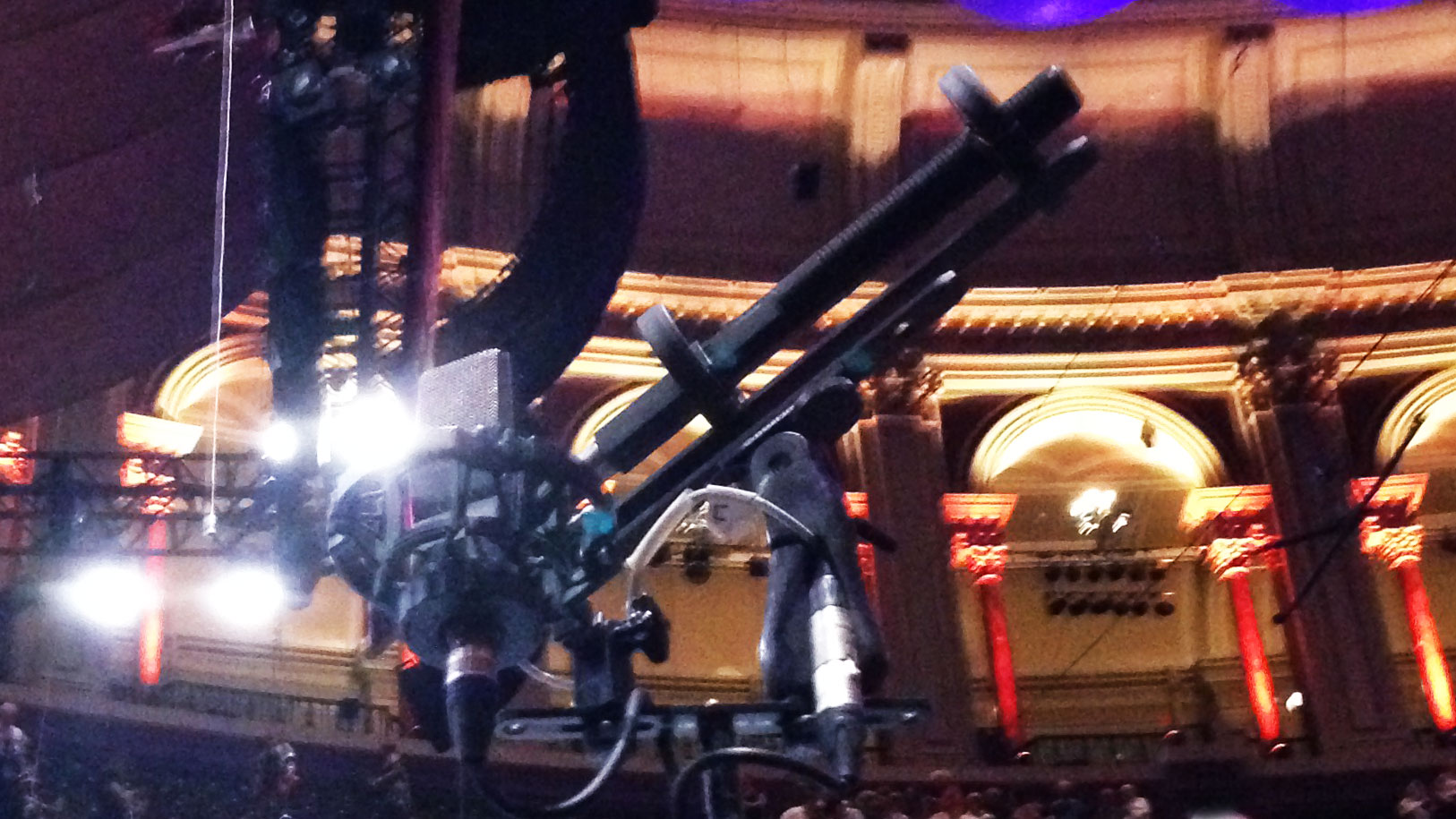An interesting MS microphone setup at the BBC Proms

Firstly, my apologies for the poor quality of the photographs but it's the best my old iPhone could manage.
The setting is London's Albert Hall at one of the BBC's summer promenade concerts (where a large section of the audience, including me, stands).
Naturally I always like to take a look at the microphones and the positions used. It's difficult though to work out how they are being used because there are multiple setups for TV and radio and for different sound supervisors. So not all of the microphones are used at the same time.
What particularly took my attention though was on my way out when I saw the mics in the photo. Despite the best efforts of the stewards to shoo me out, and the crowd whose way I was blocking, this is what I saw...



To help you see this too, look for the long thin black shape pointing upwards and towards the right. That's a shotgun microphone. I don't know for sure what make and model but I'd bet it's a Sennheiser. Down and to the left of the shotgun mic is an AKG C414, possible in its XLS incarnation. If you happen to know through insider knowledge exactly what these mics are, let me know and I'll add this information.
So what we have is a shotgun microphone pointing out into the audience area, and another microphone pointing sideways.
Hey... It's an MS (mid-side) pair, but quite a strange example. In normal practical use an MS pair would have a cardioid microphone facing forward (M) to pick up the overall mono sound, and a figure-of-eight microphone pointing sideways (S) to pick up the stereo component. The signals are then processed to give the conventional left and right channels, equivalent to a coincident crossed pair.
Why do this? Well one reason is that you have a mic pointing at the sound source rather than two mics pointing 45 degrees or more to the sides. Microphones almost always perform at their best when pointing exactly at the sound source.
Another reason often stated is that the level of the S signal can be adjusted to control the width of the stereo image, although in fairness you can do that just as easily with pan controls.
But what's going on here? Why the shotgun mic?
I'm guessing that the object is to get a good strong pickup of the reverberation and ambience of the hall, and of course applause from the audience. How stereo information from the position of the stage helps, I don't know. Nor do I know how the similar setup at the right of the stage is intended to help.
What I will say though is that an unconventional approach to MS can produce interesting results. For instance we have an example in our Electric Guitar Recording Techniques set of audio and video recordings where the M mic is placed close to the cabinet and the S mic is pulled back a metre or so. When decoded to left and right, the S mic captures a lovely ambience while the M mic maintains clarity.
What would be ideal here is if I could demonstrate what the BBC setup sounds like. But to do that I'd either need access to the feeds, which is not going to be practical, or a good strong sound source coming from the audience's position.
Well as luck would have it...
Yes, it's a nutcase shouting from the back of the hall, possibly the high-up gallery. Bad behaviour yes, but interesting to listen to as an audio example. The audio comes from BBC Radio 3.
Takeaway
It would be nice to have more detail on this mic setup, but the key point is that MS doesn't always have to follow the conventional rules. Creative MS most definitely has a role to play in audio production.
Credits
The orchestra was comprised of students from the Juilliard School New York and the Royal Academy of Music London, violin soloist James Ehnes, conductor Edward Gardner. BBC Proms.






























